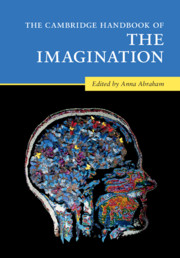Book contents
- The Cambridge Handbook of the Imagination
- The Cambridge Handbook of the Imagination
- Copyright page
- Dedication
- Contents
- Figures
- Contributors
- Acknowledgments
- 1 Surveying the Imagination Landscape
- Part I Theoretical Perspectives on the Imagination
- Part II Imagery-Based Forms of the Imagination
- Part III Intentionality-Based Forms of the Imagination
- Part IV Novel Combinatorial Forms of the Imagination
- Part V Phenomenology-Based Forms of the Imagination
- Part VI Altered States of the Imagination
- Name Index
- Subject Index
- References
1 - Surveying the Imagination Landscape
Published online by Cambridge University Press: 26 May 2020
- The Cambridge Handbook of the Imagination
- The Cambridge Handbook of the Imagination
- Copyright page
- Dedication
- Contents
- Figures
- Contributors
- Acknowledgments
- 1 Surveying the Imagination Landscape
- Part I Theoretical Perspectives on the Imagination
- Part II Imagery-Based Forms of the Imagination
- Part III Intentionality-Based Forms of the Imagination
- Part IV Novel Combinatorial Forms of the Imagination
- Part V Phenomenology-Based Forms of the Imagination
- Part VI Altered States of the Imagination
- Name Index
- Subject Index
- References
Summary
This introductory chapter provides an overview of the handbook and provides a foundation that makes a case for why this handbook is both timely and essential to advance the study of the imagination. It orients the reader to the unique opportunities afforded by applying a cross-disciplinary approach in order to significantly improve our understanding of the imagination. The chapter introduces different definitions and conceptions of the imagination before outlining the sections of the handbook and the themes that will be covered within the chapters of each section.
Keywords
- Type
- Chapter
- Information
- The Cambridge Handbook of the Imagination , pp. 1 - 10Publisher: Cambridge University PressPrint publication year: 2020
References
- 3
- Cited by



